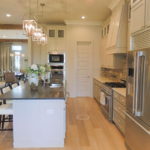Just a few short years ago, setting up and maintaining a basic website was a substantial drain on the resources of most home builders. There are so many items to consider; design, hosting, maintenance, support, platform updates and the list continues on and on. However, for those builders who are implementing a website using Software as a Service (SAAS), many of these concerns are alleviated.
So What Is SaaS?
SaaS applications are web-based, otherwise known as on-demand or hosted software. Chances are you already work with many of these applications, including Basecamp, Google Docs, and the online version of Microsoft Office every day without even realizing it!
How Does SaaS Benefit Builders?
SaaS is the perfect solution for many builders. There are no servers or software to buy, install, update, or maintain. SaaS allows you to access your website content management system and more from anywhere on the internet.
BDX is the leading SaaS provider for the home building industry. The websites we build, Custom Technology Projects, Sales Center Displays, and Envision design center are all SaaS based.
You can access and manage content easily via web browsers, with no complicated software to learn. The applications run on secure BDX servers, and we manage their performance, security, and availability, so builders can focus on building their business.
The BDX SaaS Solution
For most builders, there is just not enough time in the day to build homes, keep up with attracting new clients, and at the same time manage and make sure a website CMS is boasting all the latest updates and website best practices. With a decade of experience as the industry’s digital technology provider, we are built to stretch your marketing dollars further.
Check out the look, feel, and functionality of our client sites including:
- http://www.eagleofva.com/
- http://www.gehanhomes.com/
- http://www.greenstreetcommunitiesinc.com/
- http://www.journeyhomes.com/
- http://www.davidsmelcerdesign.com/
- http://www.bartliddonhomes.com/
BDX low monthly SaaS fees include hosting, regular platform updates, and automatic access to new features. There is never anything for you to install or download, which dramatically reduces your IT and management resources for hardware, software, personnel, and time. Not to mention your frustration with the distraction from what you do best—building homes.
Isn’t it time for you to get SaaS-y?





